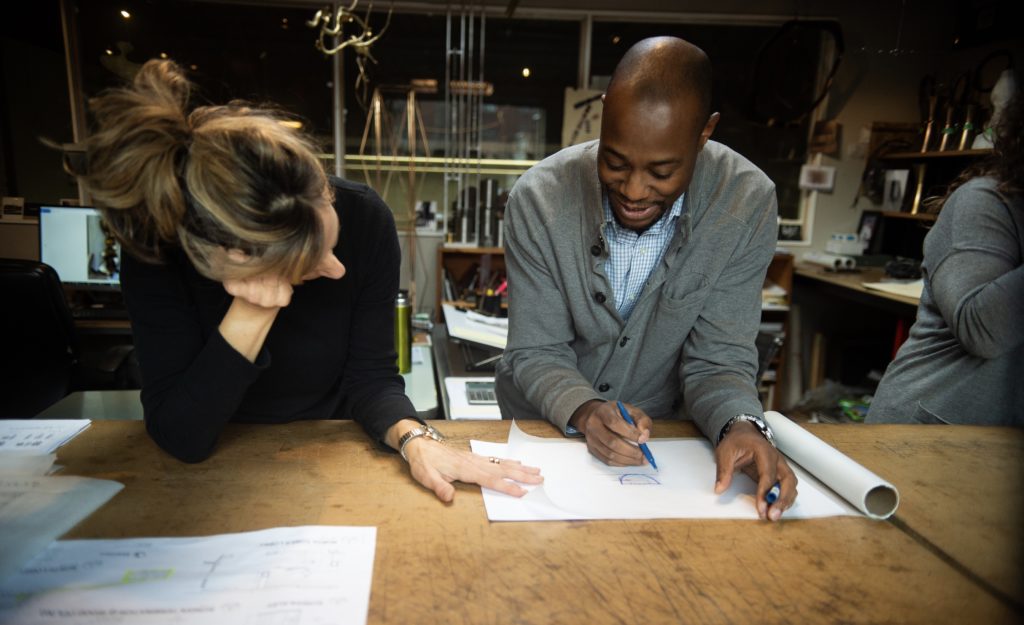Simple words that we as an industry have applied to the material trends and design cues shaping the built world around us have begun to evolve greatly. Sustainability, for example, began as a way to sum up recycled content and somewhat eco-conscious manufacturing. Today, it’s an all-inclusive word capable of describing the multifaceted and comprehensive holistic approach to human and ecological health and well-being happening within the industry.
Diversity is on a similar road to evolution. While we used to say diversity and think gender, race and religion, we now see a more varied expression of experience. That experience is poised to help shape the world around us for the better in the coming years, especially, designers said, as new demographic patterns start to become realized and majorities begin to shift.
However, many within the A&D community have said a more inclusive culture must first take shape for that evolution to continue. Fortunately, designers and manufacturers alike agree, those conversations are beginning to take shape. “In society we have a lot of behavioral etiquette that is taught to us at very early ages, and a professional/personal code of conduct and social behavioral rules — you don’t normally rock the boat,” said Angie Lee, partner and design director-interiors, FXCollaborative. “But people are slowly becoming more comfortable having that conversation. It’s not mainstream in many ways, but we’re certainly talking about it on a consistent basis, and organizations across the country and across the globe are talking about how important it is as well.”
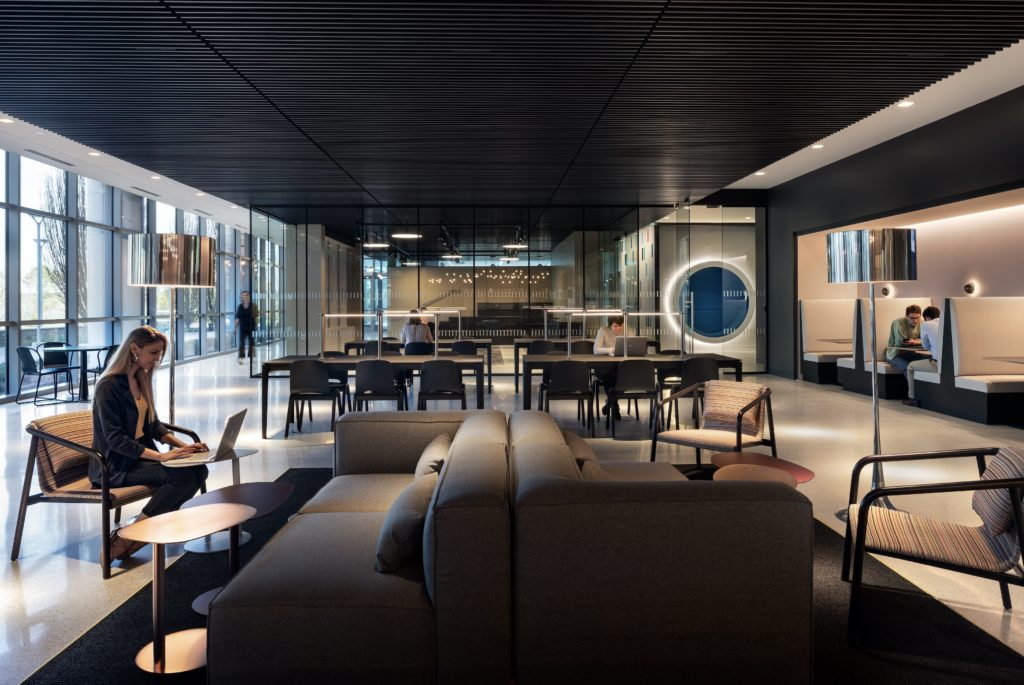
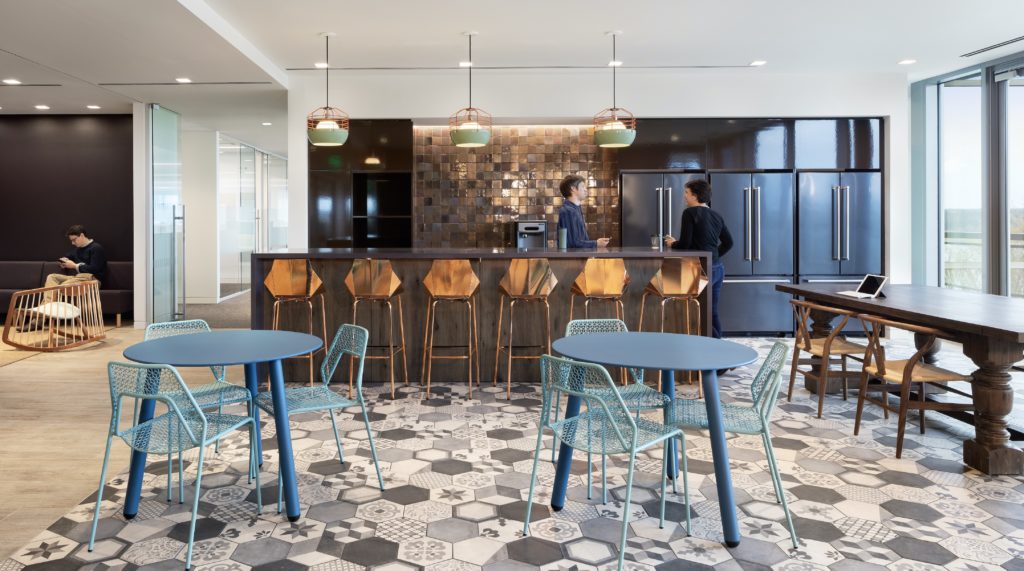
FXCollaborative’s design for this newly constructed seven-story technology building creates an innovative workplace that combines healthy design with technology and sustainability. Spaces are crafted to achieve a high level of sustainability, reflect the international firm’s values and culture, and provide a best-in-class environment for approximately 900 employees.
Defining Diversity
There’s no question that diversity in design is important. As Lee said, “When we talk about quality and diversity and inclusion, those have some really big, significant impacts in terms of how we think, how we move around our spaces and how we design for our clients.”
There are a lot of questions, however, related to the concept of diversity that remain within the industry regardless. How do we include diverse voices? Who’s championing the movement and what, exactly, does diverse even mean? Yes, in recent months the term itself has begun to alter, and some design firms and product manufacturers are bringing that change to the forefront.
“I think the definition of diversity has expanded, and that is changing the conversation in a really meaningful way because we were taking too much comfort in the buzzword aspect of it,” Lee explained. “It’s a really convenient label for a somewhat emotional and often messy topic that gets into things beyond demographics. When we talk about the kinds of story that this is allowing people to tell, it creates situations that are not very constructive if we’re not prepared for the full meaning of those terms.”
More specifically, Mausi McDaniel, vice president of brand marketing at Tarkett North America, noted the term once referred narrowly to people’s physical and demographic differences — a list of boxes that could be checked regarding race, gender, religion, age and sexual orientation. “We now talk about diversity of experience, thought, personality type, leadership style, etc.,” she said. “We’re moving toward a more holistic view of each contributor, acknowledging, respecting and placing value on all the qualities that make a person unique and seeing his or her contributions as critical to the success of our businesses.”
Javier Buscaglia-Pesquera, director of operations, interiors in HOK’s Chicago office, agreed, adding diversity means recognizing that each person is unique. “At HOK, we recognize that our differences give us a distinctive perspective that enriches our design solutions. It’s so important to have diversity of people in design because designers are not creating spaces just for ourselves but for a variety of users who are diverse in their own ways.”
When it comes to who in the industry is talking about this new definition and its impact in general, the A&D community and flooring manufacturers alike agree it’s a topic that’s beginning to surface within several market segments. “This is an intense topic in the corporate marketplace, and I’m sure that it applies to senior living communities, higher education facilities, etc.,” said Ginger Gilbert, vice president of creative, Bentley Mills. “In fact, diversity may take on a bigger conversation in those arenas as true cultural influences will come into play more in these market segments.”
Tarkett’s McDaniel went further and said every segment is becoming more mindful of the impact a diverse/inclusive culture has on the overall success of the business and the health and wellness of the people who occupy the space. “Different degrees of active discussion are taking place within each segment,” she explained, adding this caveat: “While we’re talking about and promoting diversity in a lot of different ways, there is still much more to do in order to effect change in a meaningful way.”
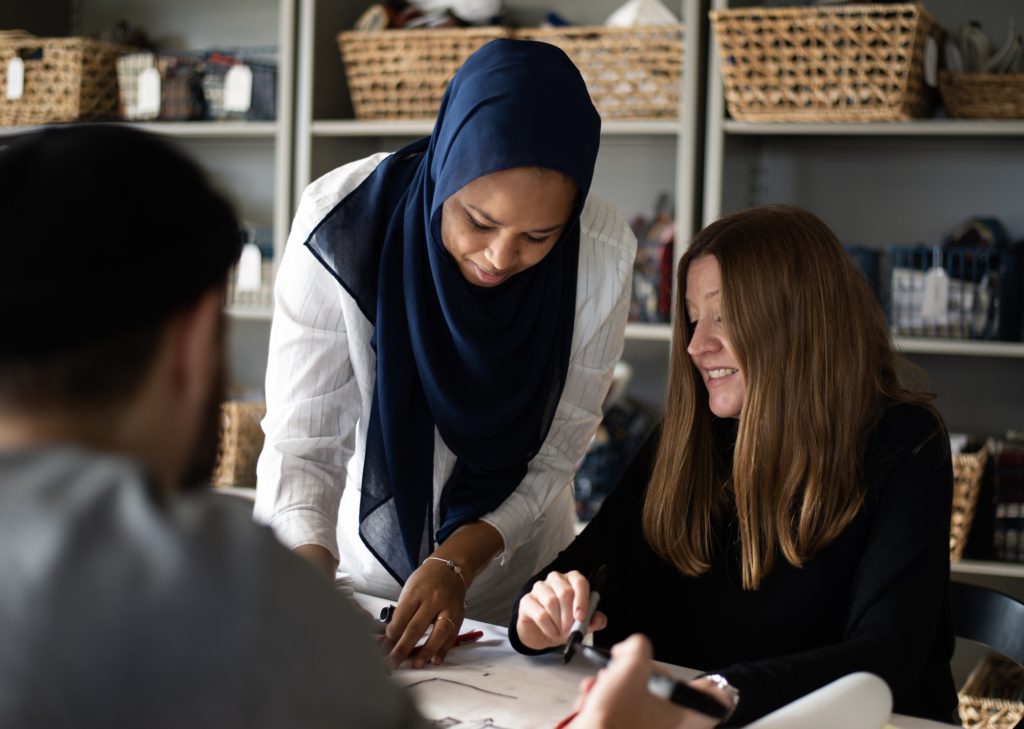
HOK provides a robust framework for inclusion, including its Diversity Advisory Council activities and collaboration within its many design studios (Toronto seen here).
Diversity’s impact on design
Commercial design is perhaps one the most impactful influencers on our daily lives, and on its shoulders rests the responsibility to design holistically. Diversity, in all its definitions, can help evolve our industry toward that more holistic expression of humanity that is starting to take shape. However, the tangible impact diversity can have on design is still somewhat undefined. For Arjav Shah, senior interior designer, Perkins & Will, more diversity equals more innovation. “You really want all the perspectives of your team members and everyone else to be heard,” he said. “We all have a lot to learn from those perspectives, and that just helps us create better and more beautiful environments for our clients.”
HOK’s Buscaglia-Pesquera said it’s those perspectives that can give detailed insights into the needs of a broad range of clientele. “For example, people with disabilities or mobility issues might have more insight on how to design a space that is more accessible for all people,” he explained, adding: “Having designers of various ages on a project can help guide a space to appeal to all ages with the way technology is used.”
FXCollaborative’s Lee noted fascinating nuances just starting to be discussed — considerations that will have huge impacts on the way we think about design. “A recent example, when you think about the entrance to a building, is that the transgender experience is completely different from the cisgender gay experience,” she said. “Normally you think of an entrance as a celebration for the building, a processional promenade for people who are entering. You want to have a lot of brightly lit pathways, and that is going to make certain groups feel safe. At the same time, it will also make certain groups feel uncomfortable and self-conscious. People who are not comfortable in their own skin as they transition are really looking for a more camouflaged way to enter a space. It’s a really fascinating dichotomy that changes the way we think about our own assumptions. It’s a dichotomy that’s not answered at the moment, but it’s something that we actively discuss within our own office.”
The responsibility to welcome diverse experiences into design doesn’t just rest on the shoulders of the A&D community. Product manufacturers, including those firms that design and develop flooring, are accountable as well. “Just like health and wellness, the discussion of diversity has to be a part of our daily focus,” Tarkett’s McDaniel said. “We have to mirror the world today in order to understand and build spaces that support it. If we cannot reflect the diversity present within society, it will be much more difficult for us to have empathy and relate to the design needs of our clients.”
When it comes to the impact diversity can have on specific market segments, Bentley’s Gilbert pointed to the corporate landscape. “Hopefully it will create a stronger, more well-rounded work force that can easily adapt to physical and social changes that have hindered productivity in the past,” she said.
Tarkett’s McDaniel nodded to the five generations currently in the workforce. “Each age group tends to have different preferences for how, when and where they work, and spaces must become more flexible to accommodate diverse and changing needs,” she explained. “We’ve seen design innovations in movable walls and reconfigurable furniture, but flooring can support this adaptability as well.”
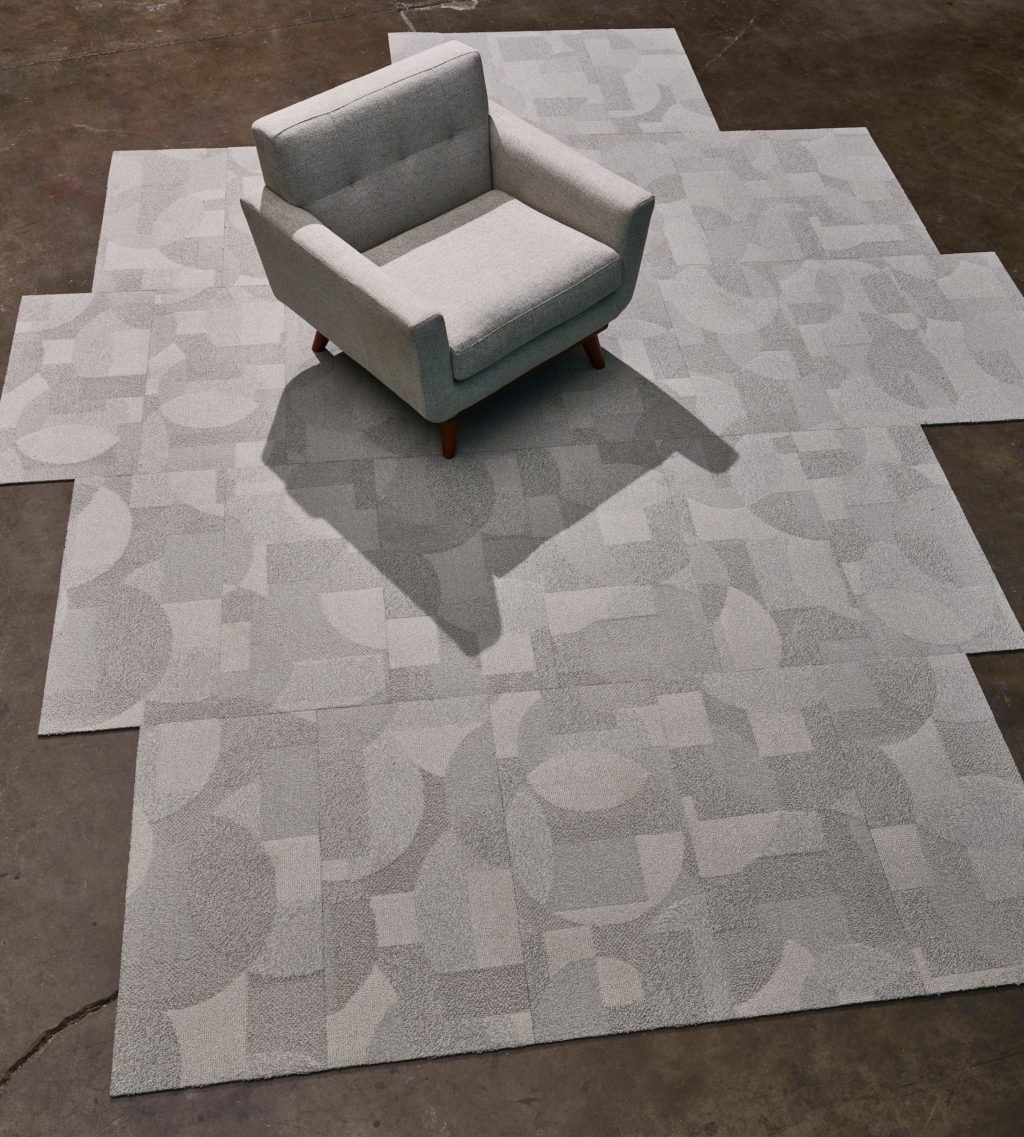
Bentley’s Sorted collection was designed to have very distinct patterns that all work together, allowing for a wide range of coordinating products suited to different needs.
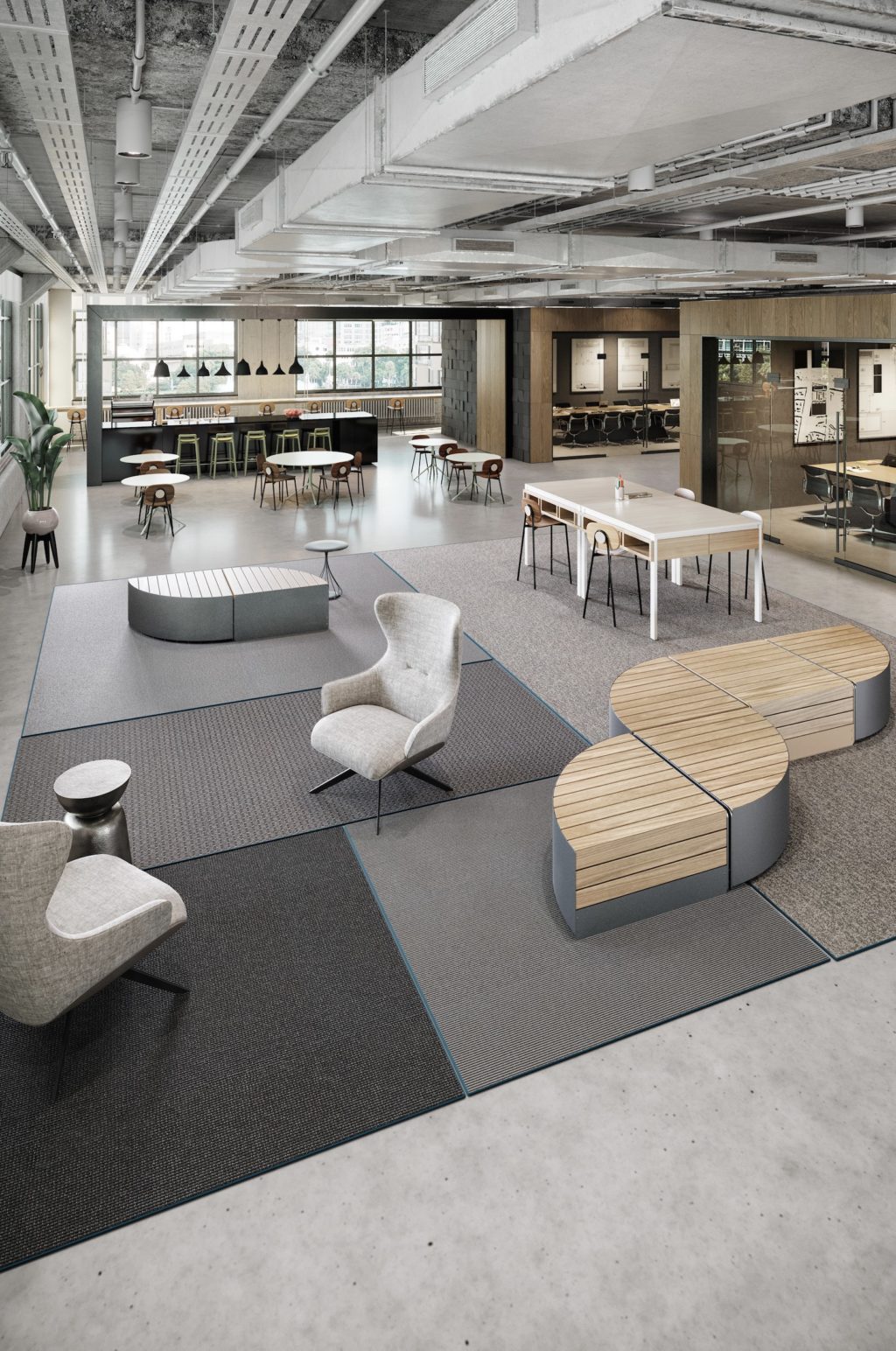
Tarkett’s Tatami System, a modular broadloom carpet, is able to accommodate diverse and changing needs with the ability to connect, disassemble and reassemble modules as spatial needs change.
What the future holds
Looking ahead, experts agree there is still much to be done before a more diverse version of our built environment can come to fruition. “The design world should reflect the populations we serve, but we’re far from it,” HOK’s BuscagliaPesquera said. “Part of our responsibilities as designers is always keeping in mind what is coming next. Depending on client programming needs, we need to design spaces that last 15, 30 or even 50 years out. Our inclusive designs need to be forward-thinking with that in mind.”
FXCollaborative’s Lee added that in the future she’d love to see the conversation have some real impact at scale. “I am really eager to see what that means from a more authentic perspective,” she added. “I think there’s a lot more to harvest from those experiences and stories.”
No matter the long road ahead, the importance of the conversation and forward movement toward inclusive expressions is without question. As Chris Stulpin, chief creative officer, Tarkett North America, has said, “Our work is about improving the human experience. When design supports both the whole self and the whole community, we have an opportunity to positively alter the cultural fabric of our society.”
To read this story in print:
